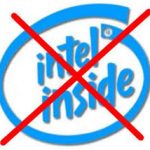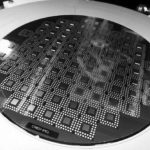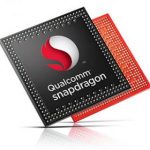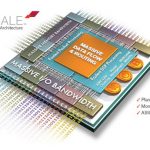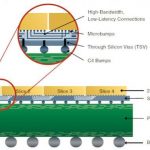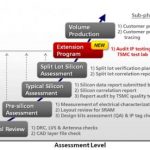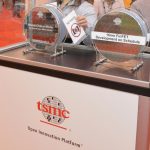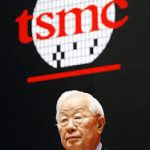Taiwan Semiconductor Manufacturing Corporation is the world’s leading semiconductor foundry by revenue and, by extension, profitability. While I am deeply saddened that current CEO Morris Chang will be retiring (again) shortly, I am hopeful that his successor will be able to continue the legacy of foundry industry leadership that the company has shown over the last few years. With that in mind, I’d like dig into the most recent quarterly report and the accompanying earnings call to try to construct a better picture of what TSMC’s near and long-term future looks like.
There’s No Stopping This Freight Train
TSMC reported a great quarter. Sales were up 14.9% on a year-over-year comparison (remember, year-over-year comparisons are the important ones to make in order to strip away the effects of seasonality), gross margins were 48.5% (just about what one would expect) and operating margin was 36.7% with net profit margin at 32%. Even with dramatically increased R&D and capital expenditures, TSMC continues to manage its expenses commensurate with its revenue growth.
Now, while TSMC’s management has been excellent in doing what it needs to in order to win in this space (outperforming the broader semiconductor industry), it’s also important to note that the company is very levered to the high growth, high-stakes areas of the semiconductor industry. In particular, TSMC has been a prime beneficiary of the mobile computing industry as a good chunk of the chips that go into phones get built at TSMC. Like ARM, TSMC is protected from the booms and busts of particular end customers and is instead levered to the industry as a whole.
The one and only sore-spot of this call was guidance for a sequential decline in Q4 and comments that the high end smartphone and tablet businesses are seeing slowing growth. This was inevitable (nothing grows to the sky), but still unfortunate. On the plus side, if Apple moves most/all of its chip production to TSMC for its next generation “A” series processor, then that will drive a fairly dramatic increase in revenues, even if the broader market slows.
That being said, TSMC isn’t quite as “safe” as ARM in terms of being levered to the broader industry. If you’re a company like Qualcomm, NVIDIA, or Broadcom, you don’t really have a choice for your instruction set architecture – it’s ARM or bust. While ARM and TSMC do face some threat from Intel (which designs and builds its own chips), that’s really it for competitive pressures for ARM. TSMC on the other hand has to deal with potential competition from Global Foundries and Samsung as foundries (and, to a verylimited extent, Intel). Further, TSMC has to deal with rather extensive capital expenditures that ARM – a vendor of IP – doesn’t have to deal with.
On the other hand, leadership in wafer fabrication pays handsomely. While ARM’s moat is “safe”, TSMC’s raw profitability is in the big leagues – during this quarter alone, the company raked in a cool $1.77B, which is more than ARM takes in as revenue in a year. Of course, for the privilege of these bigger profits (and by extension a bigger company) the risk profile is higher. Everything in business is a trade-off: there are no free lunches.
Can TSMC maintain its leadership?
At 28nm, TSMC was first out of the gate and ended up getting the majority of the business as a result. The question is, will this continue out in time? That’s the multi-billion dollar question. At the 20 nanometer generation, TSMC’s management sees “very little competition” and as a result is likely to own this generation. The question becomes trickier at the 14nm/16nm FinFET nodes.
What the entire foundry industry (both the IBM “fab club” members as well as TSMC) is doing here is taking the 20nm Back End of Line (that is, the portion of IC fabrication where the individual devices such as transistors, resistors, and such) and marrying that to next generation FinFET transistors. What this buys the industry is much higher performance at much lower leakage current levels. In short, this will enable faster chips at the same power or lower power chips at the same performance – the beauty of transistor advances.
Unfortunately, this doesn’t buy anybody any material increases in logic density (SRAM densities will improve). The bad news is that cost/transistor goes up, but the good news is that everyonein the foundry business has to deal with it (except Intel, but I’ll qualify that shortly). I believe that Dr. Chang explained it best on the earnings call,
It is a matter of competition or? We just want to be our cost to be lower than competitors. I mean, this — I come back to the story of 2 people in the camp and a bear, a big bear is approaching. And the first person quickly puts on his running shoes, and the second person says, “What’s the use? The bear is going to out run you anyway; it’s going to run faster than you anyway.” And the first person then starts to run and while he departs, he said to the second person, “All I have to do is to run faster than you, not the bear.” So on this price and costing, all we have to do is to run faster than the competitor.
So, will TSMC outrun Global Foundries and Samsung at the FinFET nodes? My personal expectation is that the answer to this question is “yes” based on prior track records but only time will tell. If it can, then I see no reason for TSMC to not continue to rake in the cash and to keep the lion’s share of the leading edge capacity. But if it can’t then things get more challenging. That being said, there’s another player worth discussing: Intel.
What about Intel?
There’s no denying that as far as transistors go, Intel is usually a generation or two ahead of the foundry players. Today Intel is shipping products built on its 22nm FinFET process and is gearing up to go into production of its first 14 nanometer products in 1Q 2014 – right about when TSMC goes into volume production of its 20 nanometer process. So, on the surface this looks pretty bad – TSMC won’t have FinFETs married to its 20nm BEOL until 1H 2015, while Intel already has a 14nm process in early 2014. But there’s a subtle question that has yet to be answered.
Typically speaking, Intel is much less aggressive about its M1 layer pitch (that is, the minimum metal pitch, which usually determines logic density) than TSMC is at comparably named nodes. For example, at 28nm, TSMC’s M1 pitch was 96nm (actually denser than Samsung’s/Global Foundries’ 114nm pitch, if the Chipworks teardown of the Apple A7 is to be believed) and at 20nm TSMC’s M1 pitch is 64nm. At Intel’s 22nm, M1 pitch is 80nm, but the M1 pitch at 14nm is unknown (since Intel has not yet detailed its process).
If Intel shrinks its M1 pitch from 80nm -> 64nm at its 14nm generation, then the claims that Intel has a density advantage at its 14nm node will be incorrect. However, Intel does claim a 2x density improvement from its 22nm node to its 14nm node. If these claims are accurate, then M1 pitch for Intel’s 14nm process shouldwork out to 56nm (sqrt(2) * 80nm). In this case, Intel would have a logic density advantage of about 30%, all else being equal. But if Intel moves to a 64nm M1 pitch, then Intel’s 14nm process and TSMC’s 16nm process should be roughly equivalent. But let’s take this a step further: what if Intel’s M1 pitch at 14nm is, indeed, tighter than TSMC’s?
The risk isn’t exactly from a foundry perspective. I’m not convinced that Intel wants to play in the general purpose foundry business, particularly as much of TSMC’s leading edge capacity is driven by Intel’s direct competitors. I also am not convinced that Intel is really ready to take meaningful amounts of foundry business from the more established foundry players. After all, there’s a lot of ecosystem work that needs to be done in order to enable this. While I do see Intel taking some steps here, it will be years before we can really view Intel as a competitor.
But the risk isthat Intel’s own products end up superior to those from TSMC’s customers playing in the same space. Now, there’s more to what makes a product better/worse than what transistor technology it was built on (designs matter, too), but transistors are fundamental.
What’s the bottom line?
The bottom line is that TSMC is a very high quality company that has done everything right and will likely consistently outperform the broader semiconductor industry for years to come. It has ramped up its R&D to be very competitive on the actual process development. While the other foundry players will try to play catch-up, TSMC’s revenue and profitability advantages against its peers is staggering, which positively feeds back into TSMC’s R&D and drives continued leadership. While there’s risk that Samsung and Global Foundries “catch up” at the next generation nodes, I’ll have to see it to believe it, and even then being there with technology doesn’t mean that all of TSMC’s ecosystem and design enablement work is worth nothing – it’s still a competitive advantage that can (and likely will) be capitalized on.
TSMC’s shares rose about 2% in trading following the release of its earnings report, and while I don’t have a crystal ball, I do expect TSMC to continue to out-perform the semiconductor industry as a whole and expect the shares to trade much higher over the coming years.
More articles by Ashraf Eassa…
Also Read: TSMC CEO Succession Plan

